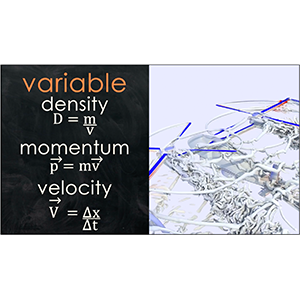About Engineering
"Scientists discover the world that exists; engineers create the world that never was." -Theodore von Karman.
Engineers use innovative thinking to solve problems and create new designs that benefit humanity. Explore these resources to find information about engineers, engineering design processes, and NASA's engineers, past and present.

NASA eClips
Real World: Computer Simulations – Turning Complex Ideas into Solvable Equations
How does NASA test ideas, like the Mars Helicopter, before they are even built? Find out more about this revolutionary helicopter and how NASA uses mathematical modeling to turn complex ideas into solvable equations that help shape future missions.
Audience: Upper Elementary and Middle School

NASA eClips
Real World: From Idea to Physical Prototype
At NASA everything begins with an idea. Physical models help NASA engineers and technicians test those ideas before building full-scale versions. Learn more about the important role physical modeling, building prototypes and mathematics play in engineering solutions.
Audience: Middle and High School

NASA eClips
Launchpad: Engineering Design to Support Scientific Discovery
Engineering design and technology development support scientific discovery. Learn about the roles engineers and scientists play when working together on NASA missions like the James Webb Space Telescope and how science and engineering take turns pushing each other to move exploration forward.
Audience: Middle and High School

My NASA Data - STEM Career Connections
My NASA Data's STEM Career Connections for the Earth Sciences
My NASA Data's STEM Career Connections feature job profiles and resources about STEM professionals who work on NASA Earth science missions. These Connections include background information on a range of engineering and technology jobs, as well as diverse individuals. They can be used by teachers to highlight the various jobs that make NASA missions possible, as well as by students to help them envision career pathways that exist in the NASA pipeline. These resources are organized by the spheres of the Earth System (i.e., Atmosphere, Biosphere, Cryosphere, Geosphere, and Hydrosphere), as well as by discipline (i.e., Science, Technology, Engineering, and Mathematics).

 Recent tweets from NASA eClips
Recent tweets from NASA eClips

